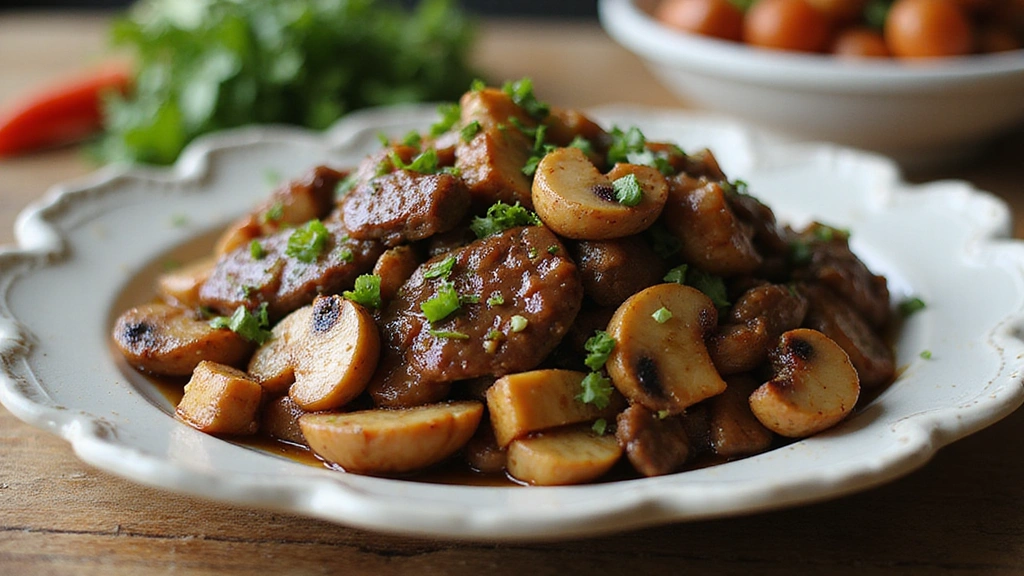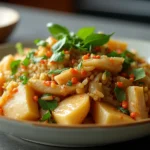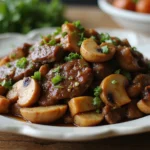This classic Chinese Beef and Mushroom recipe marries rich flavors with simple preparation for a dish that is both comforting and satisfying.
The succulent beef paired with earthy mushrooms creates a delightful umami experience that is sure to please everyone at the table.
I stumbled upon this recipe during my first visit to a bustling Chinese eatery, where the aroma drew me in and the taste left a lasting impression.
Whether you’re whipping it up for a weeknight dinner or serving it at a gathering, this simple yet flavorful dish is bound to impress.
The History and Cultural Significance
• Chinese Beef and Mushroom recipe traces its origins to the Sichuan region, where it was originally created by local chefs seeking to blend bold flavors with hearty ingredients.
• The dish evolved over decades as cooking techniques were refined and ingredients like soy sauce and oyster sauce became widely available, eventually becoming the beloved version we know today.
• In Chinese culture, this dish traditionally appears at family gatherings and celebrations, symbolizing prosperity and good fortune.
• While many variations exist across different regions, the authentic version maintains a balance of savory and umami flavors that sets it apart from imitations.
Recipe Overview
Nutritional Information (per serving)
Ingredients
Essential Equipment Guide
Wok: A wok is essential for achieving the high heat necessary for stir-frying, which allows ingredients to cook quickly while retaining their texture and flavor. Look for a carbon steel wok for the best heat conduction.
Chef’s Knife: A sharp chef’s knife is crucial for precise cutting of the beef and vegetables, ensuring even cooking and presentation. Consider a knife with a comfortable grip and good balance for ease of use.
Wooden Spoon: A sturdy wooden spoon helps to stir and toss the ingredients without scratching your cookware. Choose one with a long handle to keep your hands away from heat while cooking.
Preparation Methods
Marinating: Marinating the beef in soy sauce not only infuses flavor but also tenderizes the meat. Allow it to marinate for at least 15 minutes, but longer is better for more depth.
Stir-Frying: This quick cooking technique involves high heat and constant movement, allowing ingredients to cook evenly without becoming soggy. Ensure your wok is preheated before adding oil for the best results.
Thickening the Sauce: Adding cornstarch to the sauce helps create a glossy finish and a velvety texture. Mix the cornstarch with a bit of water before adding it to the dish to prevent clumping.
Step 1: Prepare Ingredients
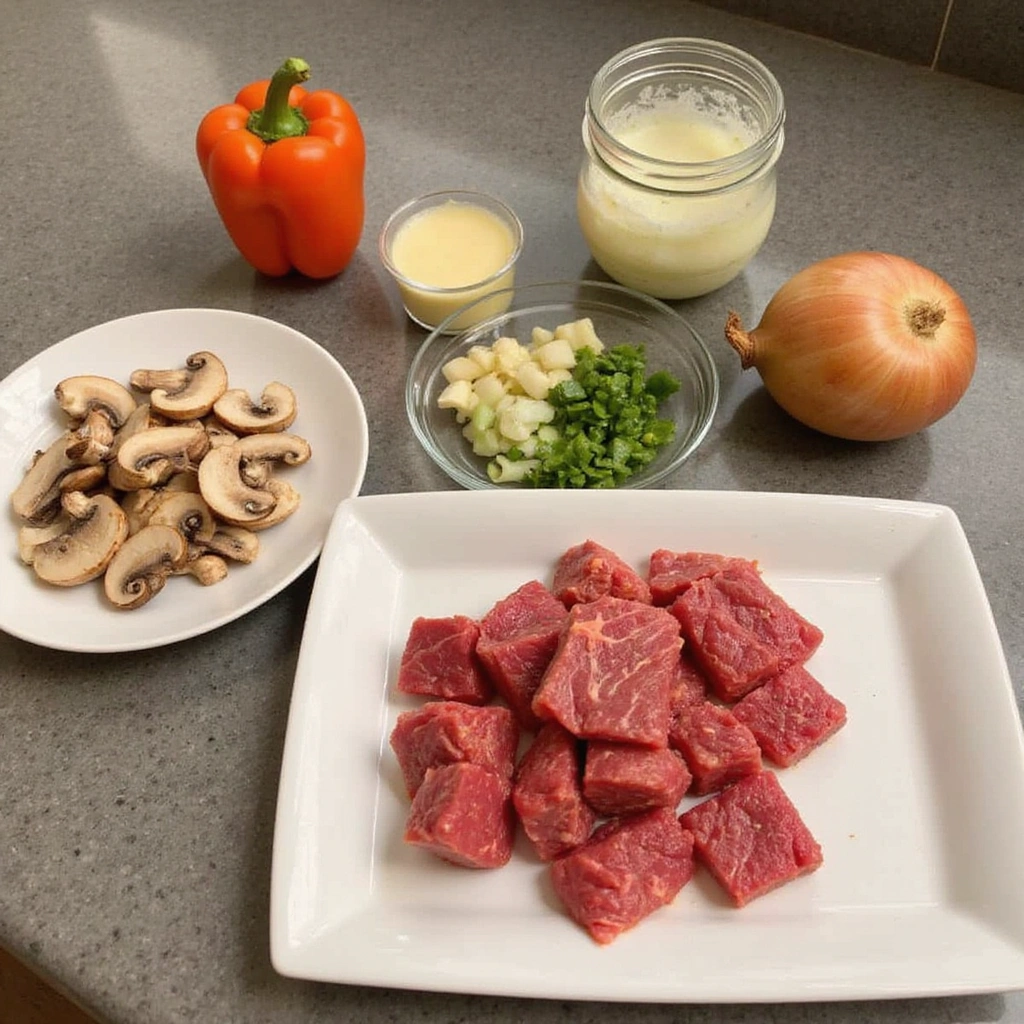
Begin by gathering all your ingredients.
Slice the flank steak thinly against the grain for maximum tenderness.
Prepare the mushrooms by cleaning and slicing them.
Chop the vegetables into uniform pieces to ensure even cooking.
Step 2: Marinate Beef
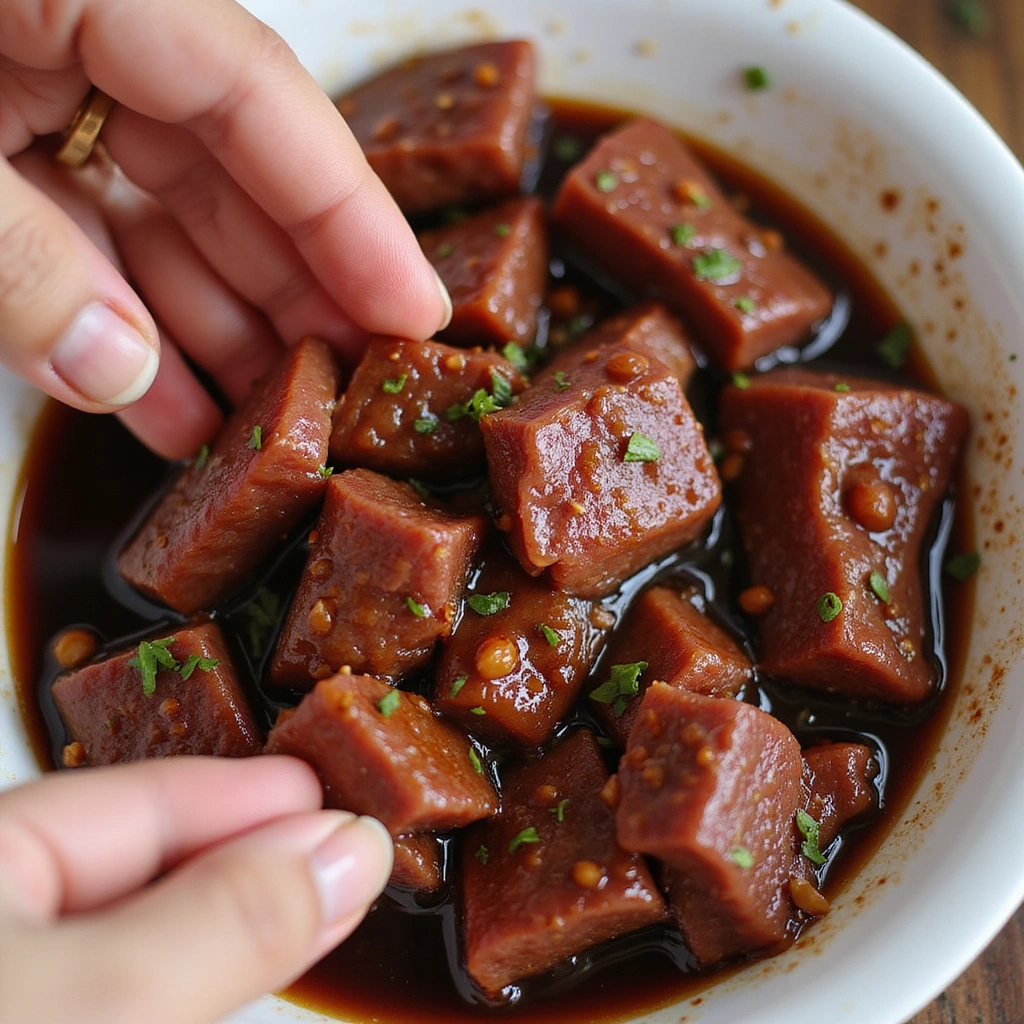
In a bowl, combine the sliced beef with soy sauce.
Mix well to ensure all pieces are coated.
Let the beef marinate for at least 15 minutes, or up to 1 hour for deeper flavor.
This process will tenderize the meat and infuse it with umami.
Step 3: Heat the Wok

Place your wok on high heat until it is smoking hot.
Add vegetable oil and swirl it around to coat the surface evenly.
This high temperature is crucial for achieving that characteristic stir-fry sear.
Be ready to add the beef quickly to avoid burning the oil.
Step 4: Stir-Fry the Beef
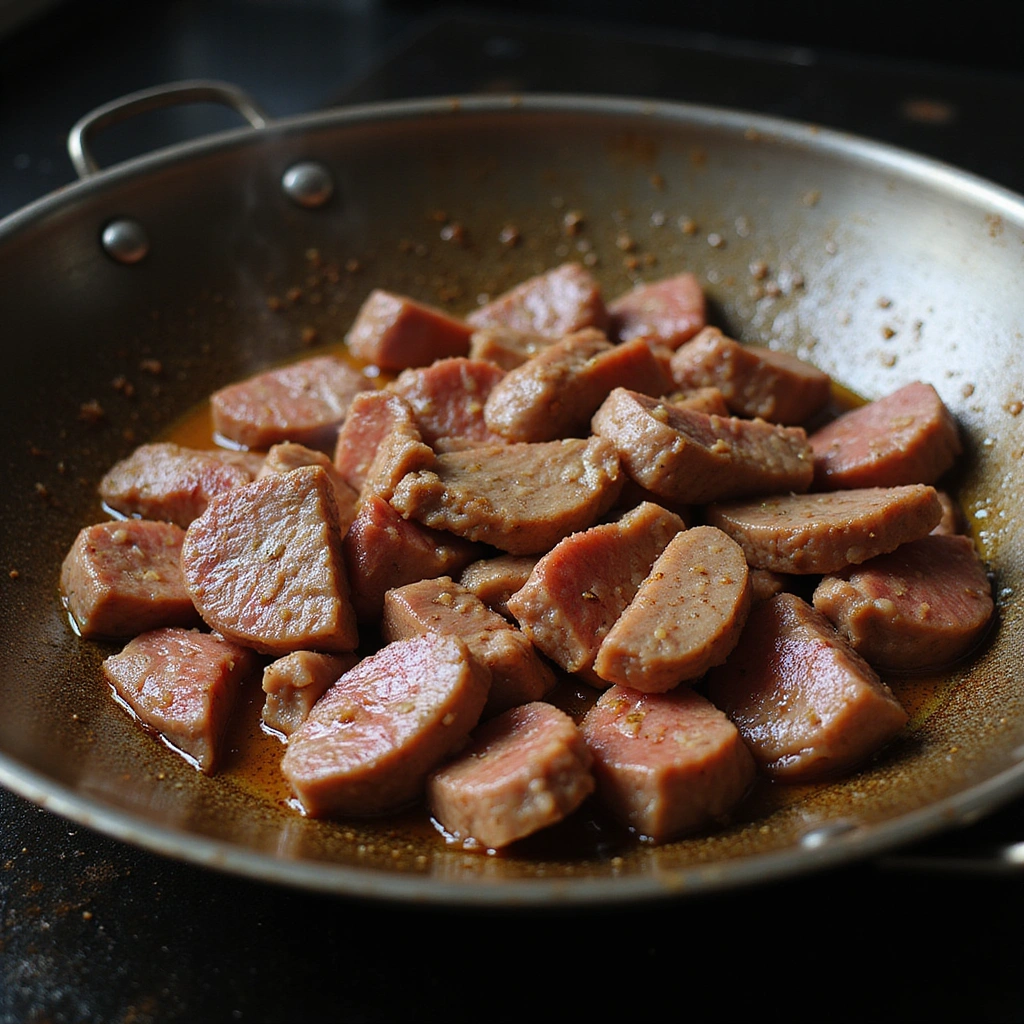
Carefully add the marinated beef to the hot wok in a single layer.
Allow it to sear for about 1-2 minutes without stirring to develop a crust.
Once browned, stir-fry for an additional 2-3 minutes until just cooked through.
Remove the beef from the wok and set aside on a plate.
Step 5: Sauté the Aromatics
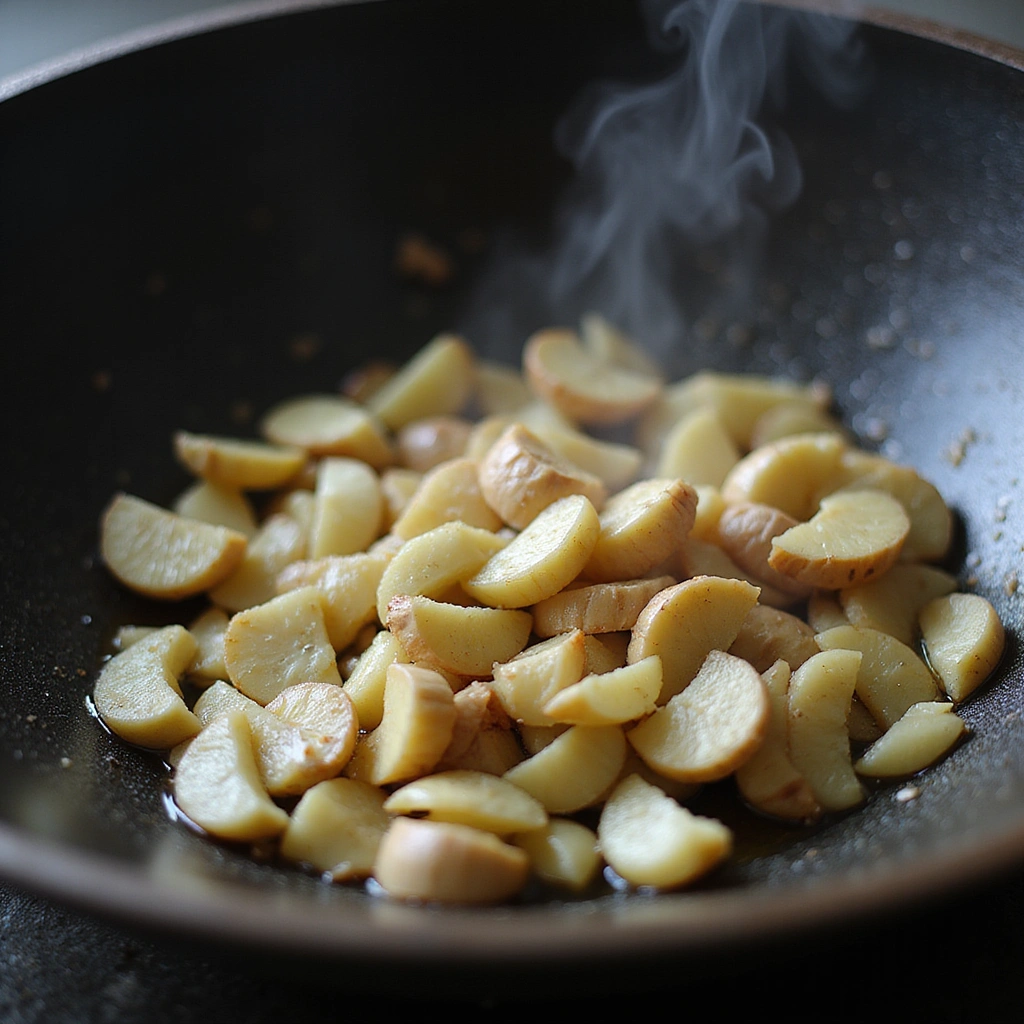
In the same wok, add minced garlic and grated ginger.
Stir-fry for about 30 seconds until fragrant but not burned.
This step builds a flavor foundation for the dish.
Make sure to keep the heat high to release the essential oils.
Step 6: Cook the Vegetables
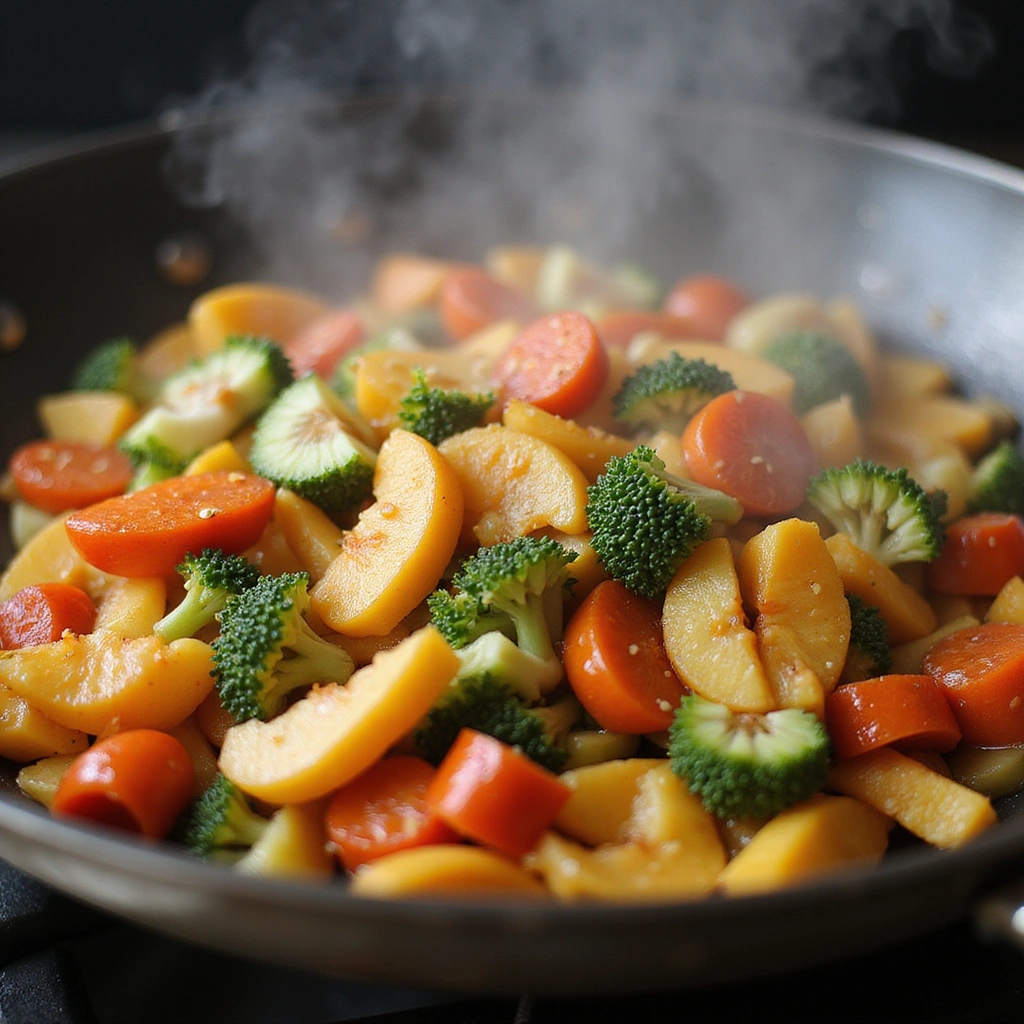
Add the sliced bell pepper and onion to the wok.
Stir-fry for 2-3 minutes until they start to soften.
You want them to retain some crunch for texture contrast.
Keep stirring to ensure even cooking.
Step 7: Add the Mushrooms

Next, add the sliced shiitake and button mushrooms to the wok.
Stir-fry for another 2-3 minutes until the mushrooms are tender.
They will release their moisture and add depth to the dish.
Ensure all ingredients are well combined.
Step 8: Prepare the Sauce

In a small bowl, mix the oyster sauce, beef broth, and cornstarch slurry.
Stir until smooth, ensuring there are no lumps.
This sauce will bring everything together and coat the ingredients beautifully.
Set aside until ready to use.
Step 9: Combine Everything
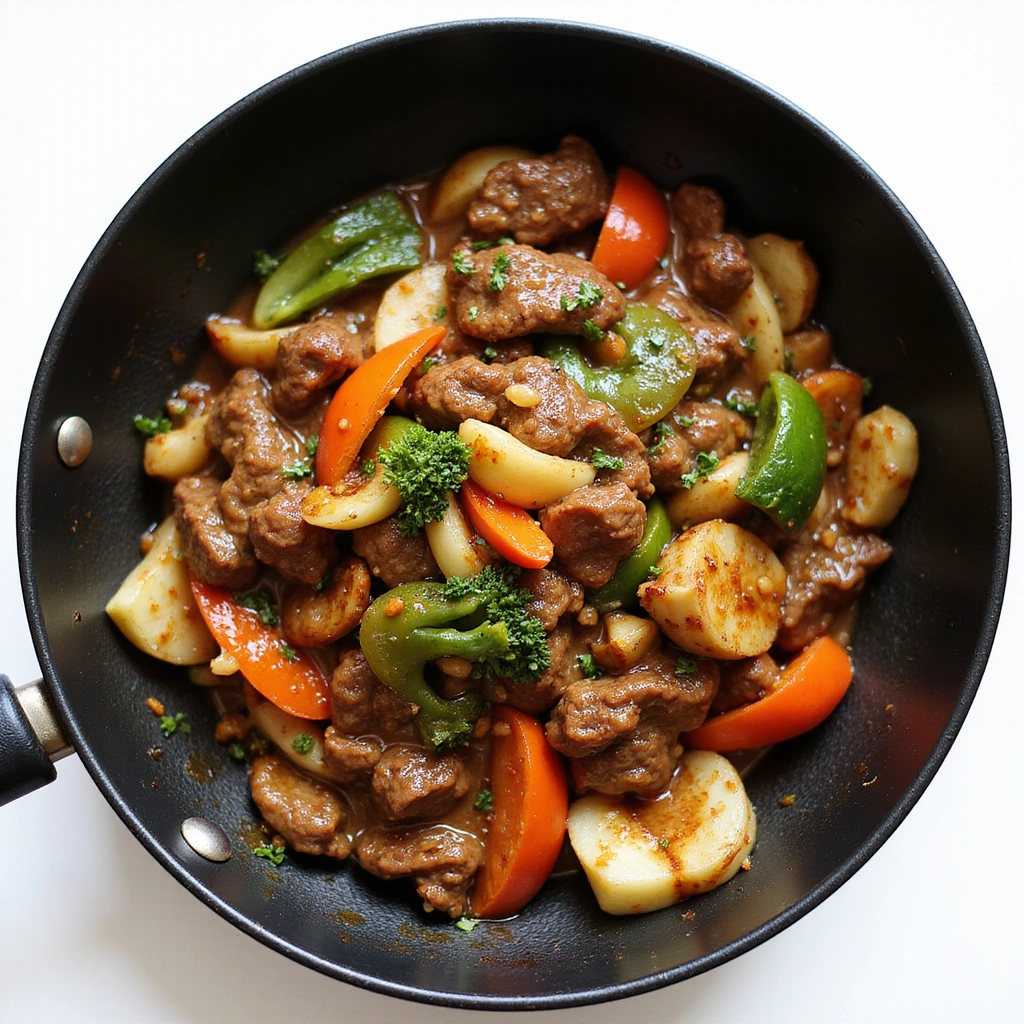
Return the beef to the wok along with the prepared sauce.
Stir everything together, ensuring all ingredients are evenly coated.
Cook for an additional 2-3 minutes until the sauce thickens and clings to the beef and vegetables.
Taste and adjust seasoning if necessary.
Step 10: Serve Hot
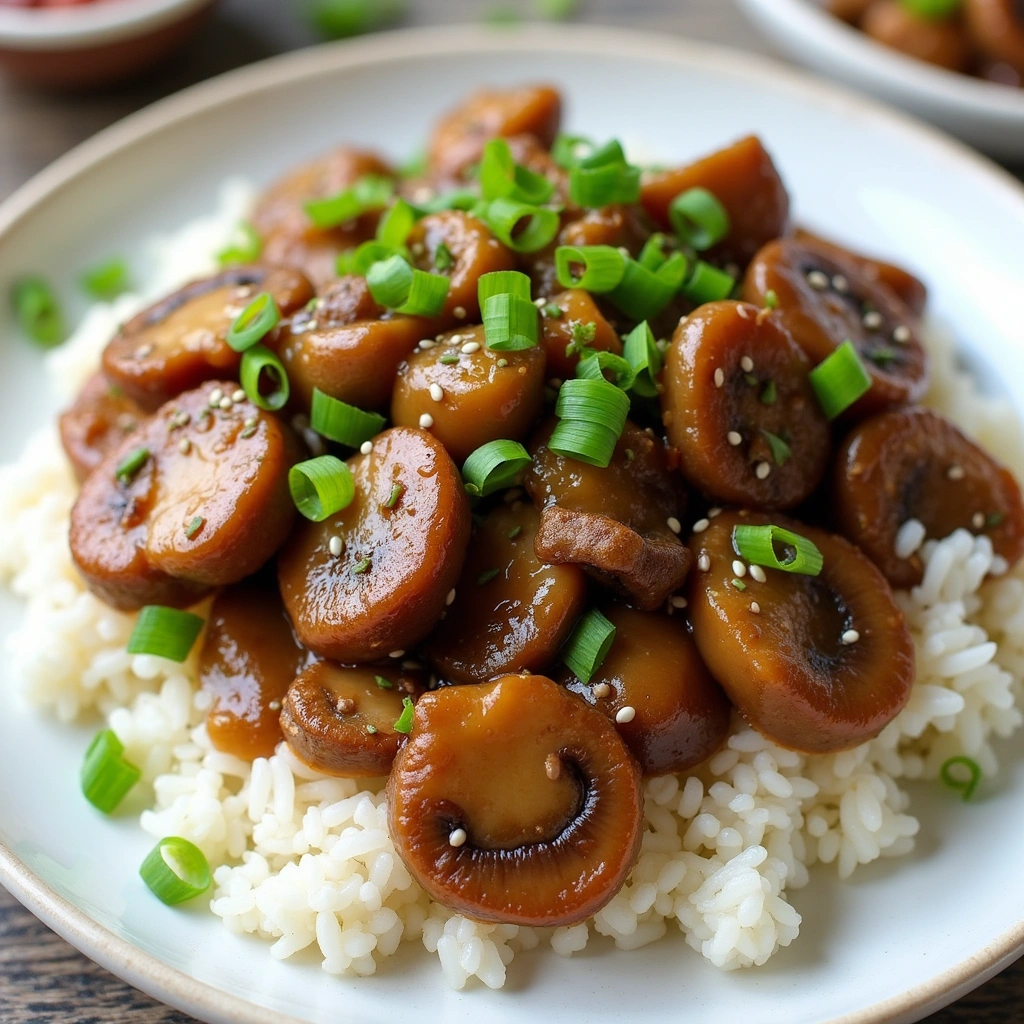
Once everything is well combined, remove the wok from heat.
Serve the beef and mushrooms hot over steamed rice or noodles.
Garnish with green onions or sesame seeds for added flair.
Enjoy the dish while it’s fresh for the best flavor.
Critical Timing and Temperature Guide
Marinating Beef: Marinate for at least 15 minutes but up to 1 hour for best results. Visual indicators include the meat appearing darker and more flavorful.
Stir-Frying Vegetables: Cook vegetables for 2-3 minutes to retain crunch. They should appear vibrant and slightly tender but not mushy.
Thickening Sauce: Allow the sauce to bubble and coat the ingredients for 2-3 minutes. Look for a glossy finish to know it’s ready.
Pro Tips for Chinese Beef And Mushroom Recipe Simple And Flavorful
• Ingredient Selection: Choosing high-quality flank steak is crucial for tenderness, while fresh shiitake mushrooms elevate the umami flavor.
• Preparation Secret: Slicing the beef against the grain significantly improves tenderness, making each bite melt in your mouth.
• Temperature Management: Always use high heat for stir-frying, as this ensures a good sear and prevents sogginess.
• Texture Enhancement: Quickly cooking the vegetables helps maintain their crunch, providing a delightful contrast to the tender beef.
• Flavor Layering: Layer flavors by adding aromatics before the vegetables, creating a depth of flavor that enhances the entire dish.
• Make-Ahead Strategies: Marinate beef a day in advance and store covered in the refrigerator to deepen the flavor.
• Restaurant-Quality Finishing Touches: Drizzle a little sesame oil just before serving for a fragrant finish that elevates the dish.
• Equipment Optimization: Using a well-seasoned wok allows for better heat retention and distribution, ensuring perfect stir-fry results.
Troubleshooting Common Issues
• Beef Not Tender: This can happen if the beef is sliced with the grain. Always slice against the grain for maximum tenderness, and consider marinating longer.
• Vegetables Too Soft: Overcooking can lead to mushy vegetables. Stir-fry in batches if necessary to maintain high heat and proper texture.
• Flavor Too Bland: This often occurs if seasoning is added too late. Ensure to taste throughout the cooking process and adjust seasoning as needed.
• Sauce Too Thin: If the sauce doesn’t thicken, make sure your cornstarch is mixed with water before adding it to prevent clumping.
• Food Sticking to the Wok: Ensure your wok is sufficiently heated before adding oil. If food sticks, it may indicate the oil wasn’t hot enough.
• Dish Lacks Depth: Add more aromatics or a splash of soy sauce to enhance flavor. Don’t overlook the importance of fresh ingredients.
Variations and Regional Differences
• Sichuan Style: This version incorporates Sichuan peppercorns and chili oil, adding a spicy kick that amplifies the dish’s flavor profile.
• Mongolian Beef: A sweeter adaptation that uses hoisin sauce and more onions, creating a different flavor balance while keeping the beef tender.
• Vegetarian Option: Substitute beef with tofu or seitan for a plant-based alternative, ensuring to adjust marination and cooking time.
• Modern Interpretations: Incorporate quinoa instead of rice or add other vegetables like broccoli for a contemporary twist on the classic recipe.
Food Science Behind the Recipe
• Maillard Reaction: This chemical reaction occurs when protein-rich foods are cooked at high temperatures, creating those rich, complex flavors and browned textures that enhance the dish.
• Umami Flavor: Ingredients like soy sauce and mushrooms are high in glutamates, contributing to the savory umami taste that makes this dish so satisfying.
• Thickening with Cornstarch: The cornstarch forms a gel when heated, which enhances the sauce’s viscosity, allowing it to coat the ingredients evenly and create a desirable mouthfeel.
Frequently Asked Questions
What’s the most common mistake people make when preparing Chinese Beef and Mushroom? The top mistake is not slicing the beef correctly. Always slice against the grain for tenderness.
Can I prepare components of this dish in advance? Yes, you can marinate the beef a day ahead and chop vegetables in advance. Store them separately in the fridge.
How do I adapt this recipe for dietary restrictions? To make it gluten-free, substitute soy sauce with tamari. For a vegetarian version, replace beef with firm tofu.
What’s the best way to store and reheat leftovers? Store leftovers in an airtight container in the fridge for up to 3 days. Reheat in a pan over low heat, adding a splash of water to prevent drying out.
Can I freeze this dish? Yes, you can freeze the cooked dish for up to 3 months. Thaw in the fridge overnight before reheating on the stove.
What wine or beverages pair best with this dish? A light red wine like Pinot Noir complements the beef well, while green tea can enhance the meal’s flavors.
How can I scale this recipe up for a crowd? Simply multiply the ingredient amounts by the number of servings needed, but cook in batches to avoid overcrowding the wok.
What side dishes complement this recipe best? Steamed jasmine rice or vegetable stir-fry pairs beautifully, balancing the flavors of the beef and mushrooms.
How do professional chefs elevate this dish for restaurant service? Chefs often use high-quality ingredients and precise cooking techniques, along with artistic plating for a refined presentation.
Serving and Presentation Guide
• Traditional Presentation: Serve the dish in a large, shallow bowl, garnished with sliced green onions and sesame seeds to enhance visual appeal.
• Modern Plating Ideas: Use a white plate to contrast the colorful ingredients, arranging the beef and mushrooms artfully, drizzling sauce around the perimeter.
• Accompaniment Suggestions: Pair with a side of steamed bok choy or a fresh cucumber salad to provide a refreshing contrast.
• Special Occasion Presentation: For formal settings, consider serving individual portions in small bowls, garnished with microgreens for an elegant touch.
Conclusion
I hope you enjoy making this Chinese Beef and Mushroom recipe as much as I do.
It’s a fantastic way to bring the flavors of China into your home kitchen.
So gather your ingredients and start cooking this delightful dish today!

